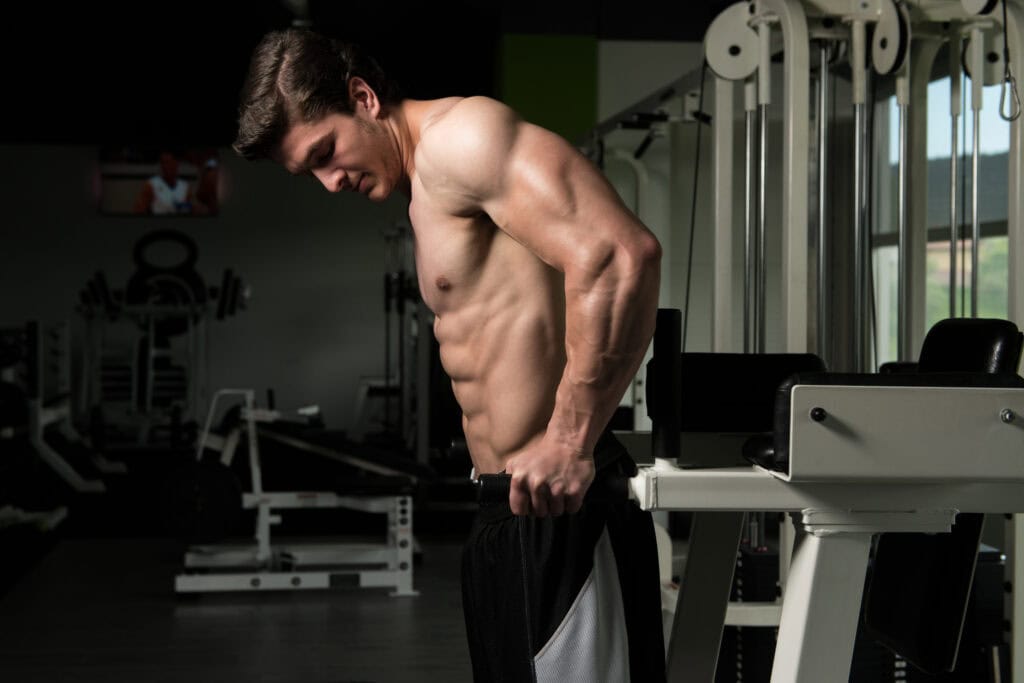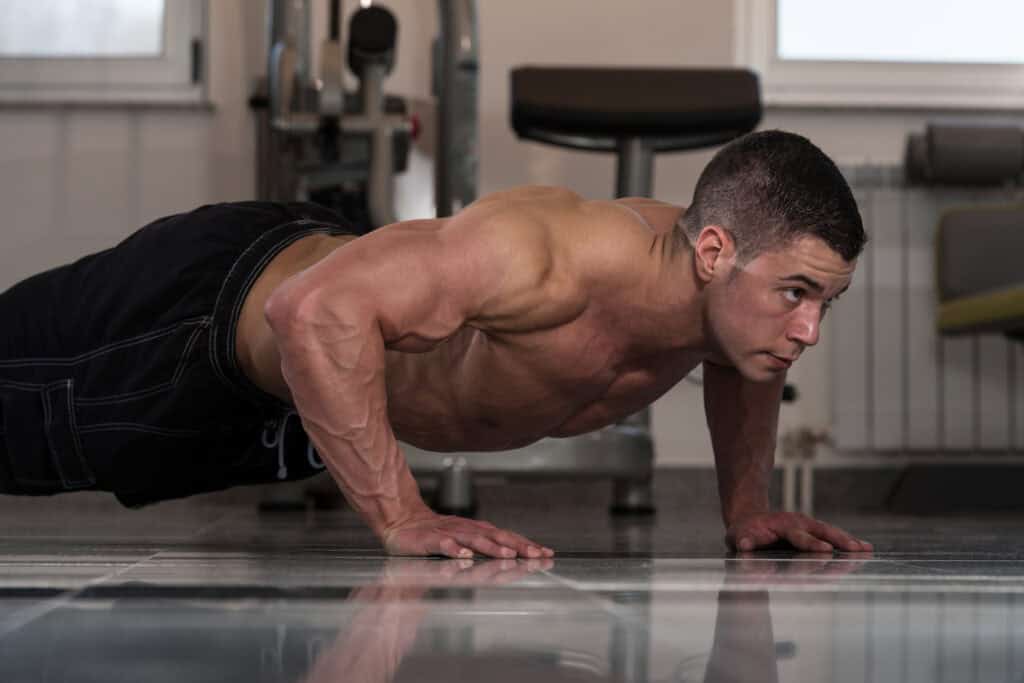Bodyweight exercises are a staple of fitness routines, offering versatility and effectiveness without the need for equipment. Compound movements, which engage multiple muscle groups, are particularly beneficial as they maximize calorie burn, muscle activation, and functional strength.
5 Best Bodyweight Exercises
For those looking to get the most out of their bodyweight training, certain exercises leverage a significant portion of an individual’s body mass, enhancing resistance and intensity. In this article, we explore the top five compound bodyweight exercises that engage a high percentage of your bodyweight, backed by scientific references.
1. Push-Ups (Utilizing 65% of Bodyweight)
Push-ups are a classic exercise that engages the chest, shoulders, triceps, and core. Research has shown that push-ups require participants to lift approximately 64-66 percent of their body weight in a standard position. As a compound movement, push-ups not only build upper body strength but also improve core stability.
- Muscles Worked: Pectorals, deltoids, triceps, and abdominals.
- How to Perform: Start in a high plank position with your hands shoulder-width apart and your body in a straight line. Lower your body until your chest nearly touches the floor, then push yourself back up. Keep your core tight throughout the movement.
- Variations: If you’re advanced, try decline push-ups to increase the resistance and further engage your shoulders and upper chest.
Research conducted by Youdas et al. (2010) demonstrated that push-ups were an effective exercise for increasing muscular endurance and strength, especially for individuals who cannot perform heavy lifts.
2. Pull-Ups (Utilizing 90% of Bodyweight)
Pull-ups are one of the most effective compound movements for upper body strength, utilizing roughly 88-95 percent of an individual’s body weight. This exercise primarily targets the back muscles, particularly the latissimus dorsi, but also engages the biceps, shoulders, and core.
- Muscles Worked: Latissimus dorsi, biceps, rhomboids, trapezius, and core.
- How to Perform: Grip the bar with your palms facing away, hands slightly wider than shoulder-width. Hang with your arms fully extended, then pull your body up until your chin clears the bar. Lower yourself with control.
- Variations: Use a narrow or wide grip to focus on different parts of the back. You can also perform chin-ups (palms facing you) to emphasize the biceps.
According to a study in the Journal of Strength and Conditioning Research (2018), pull-ups demonstrate high electromyographic (EMG) activity in the lats, biceps, and traps, making it one of the most comprehensive upper-body bodyweight exercises.
3. Squats (Utilizing 100% of Bodyweight)
Bodyweight squats are an excellent lower body compound exercise that utilizes nearly 100 percent of a person’s bodyweight. Squats engage the quadriceps, hamstrings, glutes, and core, making it one of the most effective exercises for building functional strength.
- Muscles Worked: Quadriceps, hamstrings, glutes, calves, and core.
- How to Perform: Stand with your feet shoulder-width apart. Lower your hips back and down as if sitting in a chair, ensuring your knees do not extend past your toes. Keep your chest up and engage your core. Return to the standing position by pushing through your heels.
- Variations: For an added challenge, try single-leg squats (pistol squats and Bulgarian split squats), which increase resistance by forcing one leg to support the body’s full weight.
A study from Medicine & Science in Sports & Exercise (2010) confirmed that bodyweight squats are highly effective for developing muscular endurance and strength in the lower body, making them ideal for both beginner and advanced athletes.
4. Dips (Utilizing 75% of Bodyweight)
Dips are an essential bodyweight exercise for targeting the upper body, particularly the triceps, chest, and shoulders. In a standard dip, approximately 74-78 percent of your bodyweight is lifted , which makes it a challenging yet effective exercise for building upper body strength.
- Muscles Worked: Triceps, pectorals, deltoids, and core.
- How to Perform: Using parallel bars or the edge of a bench, lower your body by bending your elbows until your upper arms are parallel to the ground. Push back up to the starting position, keeping your elbows close to your body.
- Variations: You can perform bench dips for a modified version or use gymnastic rings for an added core challenge.
Research published in the Journal of Biomechanics (2016) highlighted that dips, when performed with proper form, activate the triceps and chest effectively, making them a great addition to any upper body routine.

5. Plank-to-Push-Up (Utilizing 73% of Bodyweight)
The plank-to-push-up, or plank push-up, is a dynamic compound exercise that transitions between a plank position and a push-up position. This exercise engages the core, shoulders, chest, and triceps while maintaining about 70-75 percent of your body weight in the working muscles .
- Muscles Worked: Abdominals, deltoids, pectorals, triceps, and obliques.
- How to Perform: Start in a plank position on your forearms. Push up into a high plank, one hand at a time, until you are in a push-up position. Lower back down to your forearms one arm at a time. Keep your body as stable as possible throughout the movement.
- Variations: You can increase the difficulty by performing the movement on an unstable surface, such as a balance board, or by adding a push-up after each transition.
This movement combines the benefits of planks and push-ups into one highly efficient exercise, maximizing muscle activation. Research shows that combining these two movements engages a higher percentage of muscle fibers and enhances core strength .
Conclusion
Bodyweight exercises provide an accessible and highly effective way to build strength, endurance, and overall fitness. The five compound movements discussed here—push-ups, pull-ups, squats, dips, and plank-to-push-up—leverage a high percentage of your body weight, making them excellent choices for developing functional strength. By incorporating these exercises into your routine, you can improve your overall fitness while engaging multiple muscle groups.
For the best results, aim to perform these exercises with proper form and consistency. Whether you’re working out at home or in the gym, these exercises are perfect for building a solid foundation of strength and muscle endurance.
References
Youdas, J. W., et al. (2010). Electromyographic analysis of push-up variants. Journal of Strength and Conditioning Research.
Byrne, C., & Faure, C. (2018). EMG analysis of pull-up techniques. Journal of Strength and Conditioning Research.
Escamilla, R. F., et al. (2010). Biomechanics of squats. Medicine & Science in Sports & Exercise.
Vigotsky, A. D., et al. (2016). Kinetics and electromyography of the dip. Journal of Biomechanics.
Schoenfeld, B. J., et al. (2013). The plank exercise and core strength. Journal of Strength and Conditioning Research.
Stay Strong Together
For those looking to enhance their fitness journey, the award-winning Jefit app is an invaluable tool. Jefit offers personalized workout plans, extensive exercise libraries, and progress tracking features to help you reach your health goals. Whether you’re focusing on your carb intake, aiming to build muscle, or seeking to improve overall fitness, Jefit provides the resources and support needed for success. Join millions of users worldwide who have transformed their lives with Jefit, and take control of your health and fitness today.
- Hybrid Metabolic Strength Training for Faster Results - December 10, 2025
- Why Lifters Choose JEFIT App for Real Strength Gains - December 3, 2025
- Nutrition Trends Bodybuilders are Talking About in 2025 - November 26, 2025
